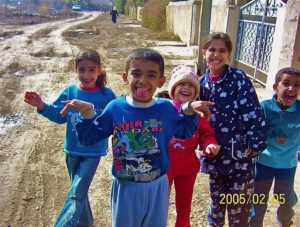Building a Brighter Future: Renewable Energy in Iraq
 Twenty years after the U.S. invasion of Iraq, the nation of more than 40 million people still struggles with instability, poverty and power deficiency. More than 80% of power generation in the country relies on crude oil. Despite its massive oil reserves, the country still experiences frequent outages and poor distribution due to underinvestment. Developing renewable energy in Iraq could solve the growing problem of power shortages and reduce the reliance on generators.
Twenty years after the U.S. invasion of Iraq, the nation of more than 40 million people still struggles with instability, poverty and power deficiency. More than 80% of power generation in the country relies on crude oil. Despite its massive oil reserves, the country still experiences frequent outages and poor distribution due to underinvestment. Developing renewable energy in Iraq could solve the growing problem of power shortages and reduce the reliance on generators.
The State of Energy in Iraq
While most households in Iraq get access to electricity, daily power outages occur in most parts of the country. This, in part, is due to underfunded distribution systems and damaged infrastructure, as well as power demand that exceeds the current supply capacity. Acts of mismanagement and corruption by government officials also factor into power supply problems.
High-income citizens often pay 125,000 dinars ($100) a month on average to receive a steady, reliable power supply. But the quarter of the population living in poverty, alongside many among the working class, don’t have the means to afford a steady power supply. The lack of reliable power leaves people in a constant state of worry. Also, they are unable to run cooling units in extremely high temperatures. Issues such as general inequality, lack of job opportunities and inadequate services contribute to worsening the situation.
Most of the country’s energy comes from its vast oil reserves. Meanwhile, renewable energy accounts for only 2% of the country’s output. And despite its vast amounts of oil, which account for roughly 8% of the world’s total reserves, the country continues to rely on neighboring Iran to keep up with growing power demands.
Future Outlook
Iraq’s climate and geography have strong potential for renewable energy development. The country receives a significant amount of sunlight, making it ideal for photovoltaic power. There are also some regions that receive viable wind speed and others that could utilize geothermal development.
On the other hand, reports suggest that to facilitate the building of renewable energy in Iraq, significant changes need to take place. These changes include the development and implementation of a government action plan for developing renewable energy in conjunction with reforms that make business opportunities more lucrative for foreign and private investors.
On the bright side, the Iraqi government is already making efforts toward the development of renewable energy. These efforts involve several business deals with foreign contractors, including an agreement in 2021 to create 2 gigawatts (GW) of renewable energy with UAE clean energy firm Masdar. While finalizing the agreement with Masdar, Iraq’s oil minister stated the country hopes to build 7.5 GW of renewable energy. More recently, in August of 2022, the government hosted a two-day workshop in Baghdad to teach Iraqi stakeholders how to “procure affordable energy solutions.”
Hope for a Better Future
Despite the progress made since the devastation of the war, Iraq still faces numerous challenges. Its energy grid is underfunded and unstable, leaving millions of its most vulnerable citizens without access to a reliable power supply. However, the development of renewable energy in Iraq could provide a solution to the country’s electricity crisis. This shift to renewable energy would make the grid more affordable and reliable, ensuring that those living below the poverty line do not have to worry about losing power. Furthermore, this shift would create new job opportunities and help raise the standard of living for the Iraqi people. Recent initiatives by the Iraqi government suggest a hopeful future where the country has a fully developed renewable energy supply and a more robust and stable economy.
– Jonathon Crecelius
Photo: Flickr
